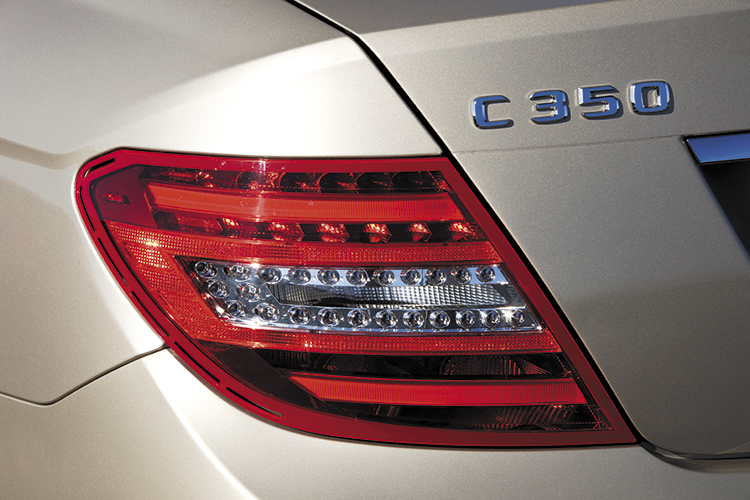
In the Mercedes-Benz scheme of things, the 2011 Mercedes-Benz C-Class you see here will hold the fort until its proper successor arrives at the end of 2013.
More than 2000 different components were changed. Obvious on the outside are the new exterior parts, which include redesigned headlamps (with cool C-shaped position lights for the bi-xenon option).
Like before, the Mercedes-Benz C-Class Avantgarde variant has a more aggressive grille treatment than the Elegance version, but now the two interiors are more easily differentiated.
Not so obvious is the aluminium bonnet, which weighs 9.2kg less than the previous steel piece. This feature is in line with the “greater efficiency” theme of the updated Mercedes-Benz C-Class, which comes with the latest 7-speed automatic and an unobtrusive Eco start/stop function as standard across the range.

The interior upgrades to the Mercedes-Benz C-Class are welcome, particularly the redesigned dashboard and enhanced equipment.
The 1.8-litre 4-cylinder continues to be available in three states of tune (156bhp C180, 184bhp C200 or 204bhp C250), but their new gearbox (it used to be a dated 5-speeder) and other detail tweaks translate into meaningful performance gains.
The new Mercedes-Benz C200, for instance, is 12 percent more economical than its predecessor, yet it is almost half a second quicker from standstill to 100km/h.
The quickest Mercedes-Benz C-Class currently is the C350. Its 3.5-litre V6, a development of the previous unit, boasts 306bhp (34bhp more) and 370Nm (20Nm more).
The bigger output is accompanied by a smaller appetite for fuel – some 30 percent less than the older Mercedes-Benz C350.
Of course, if you make full use of the Mercedes-Benz C350’s accelerative ability, its fuel economy suffers accordingly. The smooth V6 sounds good when stretched and its cruising refinement is exemplary, with the engine operating quietly in the background yet ready to rev high and push hard when there is serious work to be done.

The spread of seven gear ratios keep it in the thick of the acceleration action, with the paddle shifters providing a more positive override than the “left-right” manual mode of the lever.
Our test car came with the AMG package, which specifies front slotted disc brakes and 225/45 R17 rubber. In this configuration, the Mercedes-Benz C350 corners capably and steers sharply enough to be interesting, with body movements well controlled throughout.
No less than 10 state-of-the-art driving aids have been newly introduced to the vehicle, most of them extra-cost options taken from the Mercedes-Benz E- and S-Class models.
The Mercedes-Benz C-Class also introduces improved infotainment with Internet access, a friendlier interface and better multimedia capability than the existing Comand telematics.
This “reset to zero” exercise for the four-year-old Mercedes-Benz C-Class comes in time to welcome the all-new BMW 3 Series, which will make its international debut later this year.

Mercedes-Benz C-Class C350 3.5 (A)
ENGINE 3498cc, 24-valves, V6
MAX POWER 306bhp at 6500rpm
MAX TORQUE 370Nm at 3500-5250rpm
GEARBOX 7-speed automatic with manual select
0-100KM/H 6 seconds
TOP SPEED 250km/h
CONSUMPTION 14.3km/L
PRICE INCL. COE To be advised (as of May 2011)
Check out the latest Mercedes-Benz C-Class












